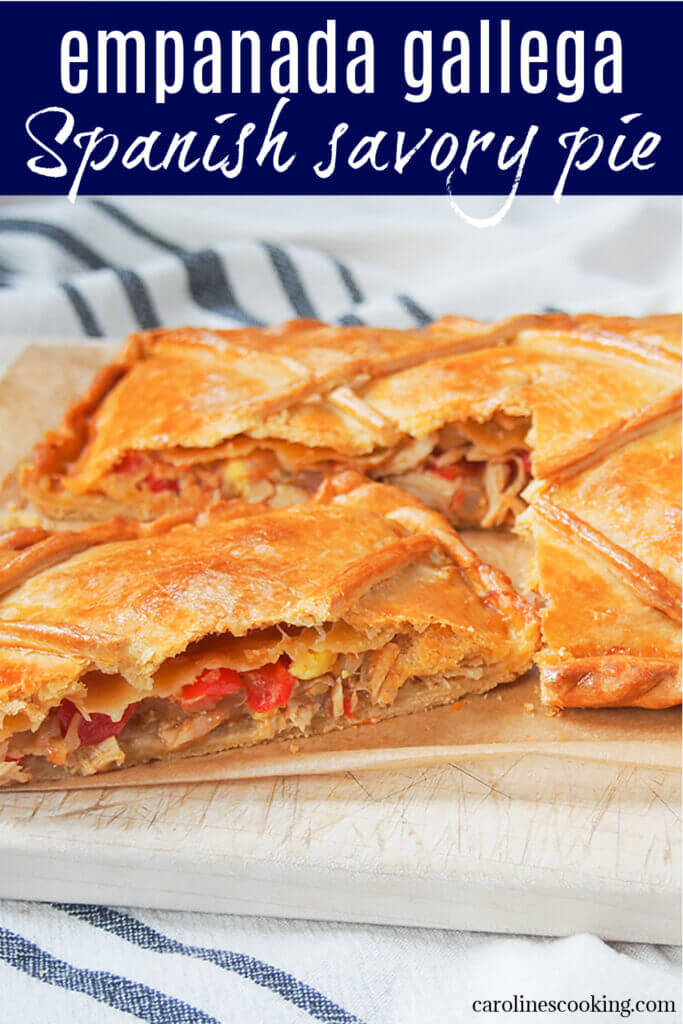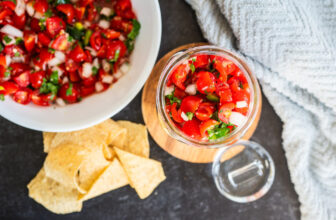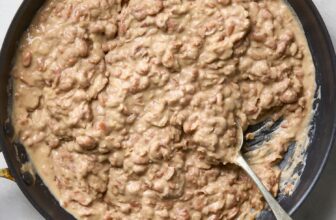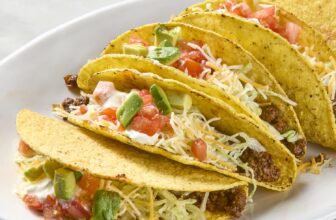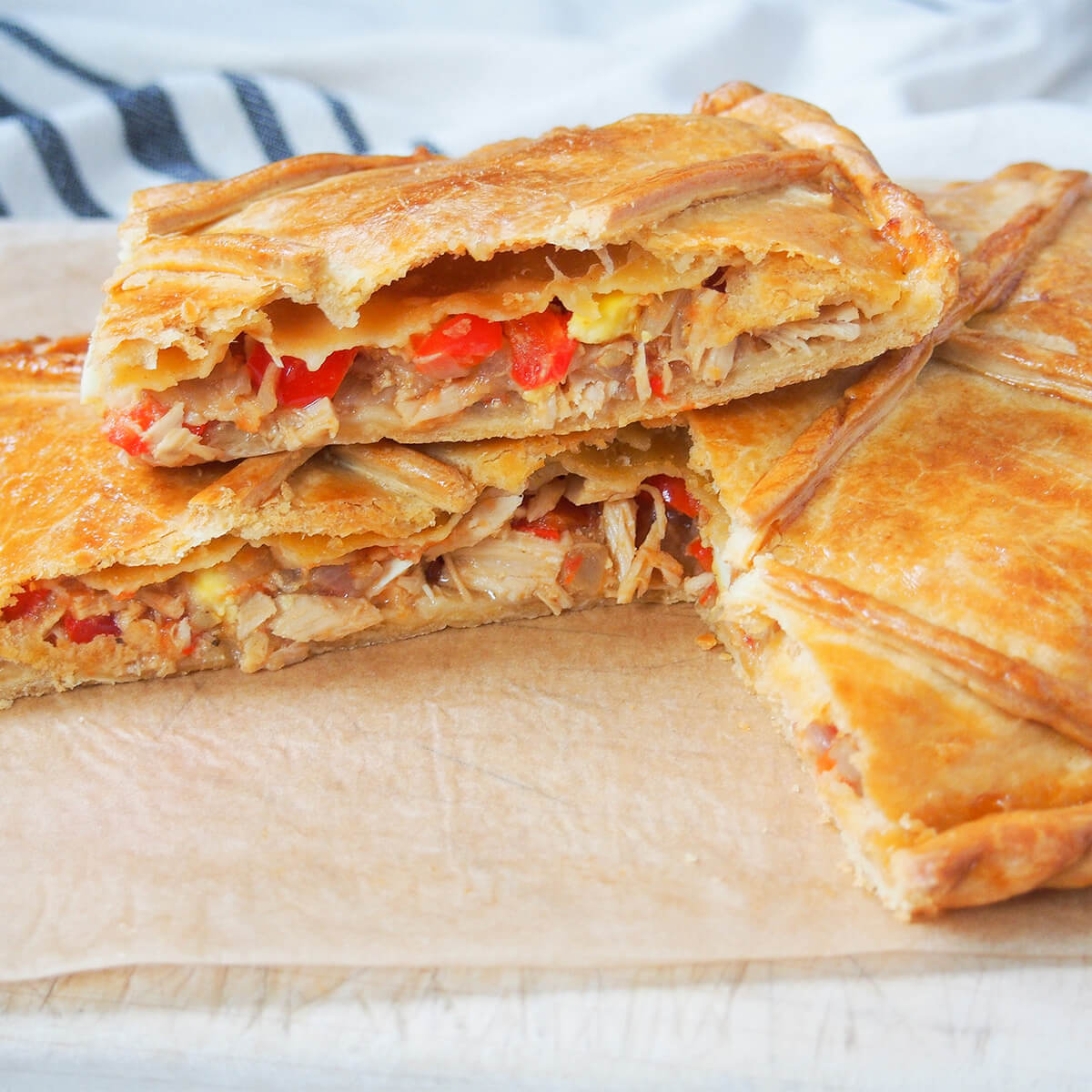
[ad_1]
Empanada gallega is a delicious Spanish savory pie, filled with tender onion, pepper and tomato and, in this case, tuna and egg. It’s typically made as a larger pie to cut into slices to share (or come back for an extra slice!) A tasty combination of crisp pastry and simple yet flavorful filling.
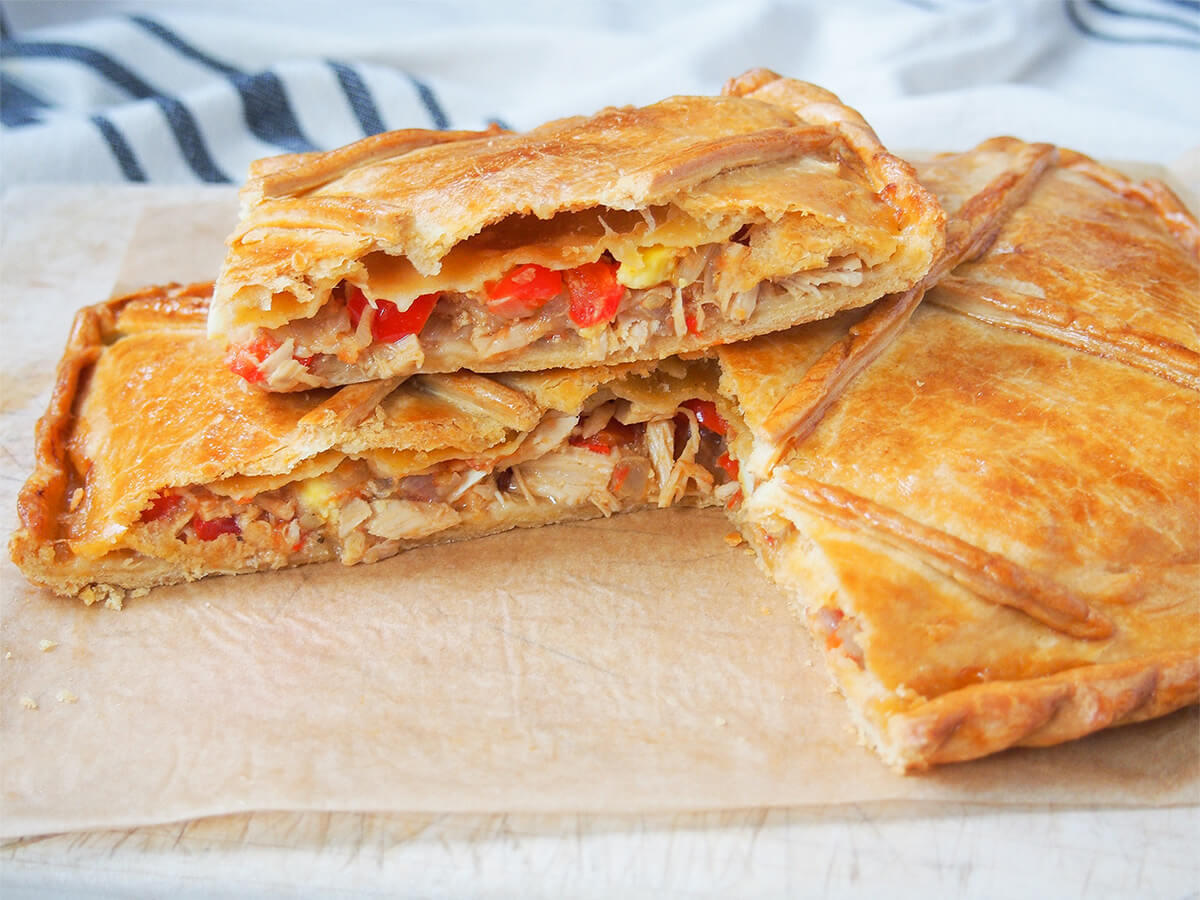
This post may contain affiliate links, where we earn from qualifying purchases. See more details in the policy page.
Many places have some form of savory bite that’s ideal for a quick snack or meal on the go. Some classics are pizza in Rome, Cornish pasties in the South of England, tacos in Mexico.
Empanadas are another classic that exist in various parts of the Spanish speaking world, in different forms. And this is one delicious one to try.

Empanada gallega history
These days, empanadas are possibly better known in parts of Latin America, but their origins can be traced back to Spain. In fact most agree, these Galician empanadas are the original empanada, with written records of them as far back as the 7th century.
“Empanada gallega” means “Galician pie” as this pie comes from the region of Galicia in Northwest Spain. This style of empanada, unlike many others, is typically a large pie that you cut into slices. You can eat it both warm or cold, so you can pack a slice to take with you.
These were pies that people took while traveling the pilgrimage routes of the Camino de Santiago, or while working on fishing boats around Galicia’s extensive coast. And you’ll still find it both made at home and lining the windows of bakeries in the region. I remember well seeing both this and tarta de Santiago all over Santiago de Compostella in particular, but also other towns in the area.

What is empanada Gallega made of?
As with many traditional recipes, you will find a number of variations in this Galician pie, both in the filling and in the dough. For the filling, most start with a softened vegetable base of onions, bell peppers and tomato. You cook these down in plenty of olive oil over medium low heat so they are gently sweet and tender. You can make this the day before as you add it to the pie cold.
In addition to the vegetables, the most common main ingredient is canned tuna – this version of the pie can be called “empanada de atun”. You will also find versions filled with pork or chicken, though these are are less common, and in general found inland rather than on the coast.

Other additions include hard boiled egg and olives, but usually little more beyond that. Hard boiled eggs can also be cooked ahead of time, so the filling is all easy to assemble when ready. Though I don’t recommend chopping the eggs until needed to avoid them drying out.
For this empanada recipe I have used the vegetable base, tuna and egg as this is what I always saw most often when I was in Galicia. It’s a really tasty mix, that pairs well together and is easy to make, too.
Making the empanada dough
The empanada dough is a simple wheat flour based dough, which can have a few variations. Most include salt and olive oil and other liquid to bring it together. Some use the oil from cooking the vegetables or from the canned tuna to add a little extra flavor. The liquid can be water, milk, or water with some white wine, again for flavor (and it’s a classic regional ingredient).
Some versions add egg and/or yeast, while others do not. If you use yeast, traditionally it’s fresh yeast but since I can rarely find it I have used instant instead. If you do want to use fresh, double the quantity compared to dry. You don’t want a lot, as you aren’t looking for the dough to rise, but it helps lighten the texture slightly.
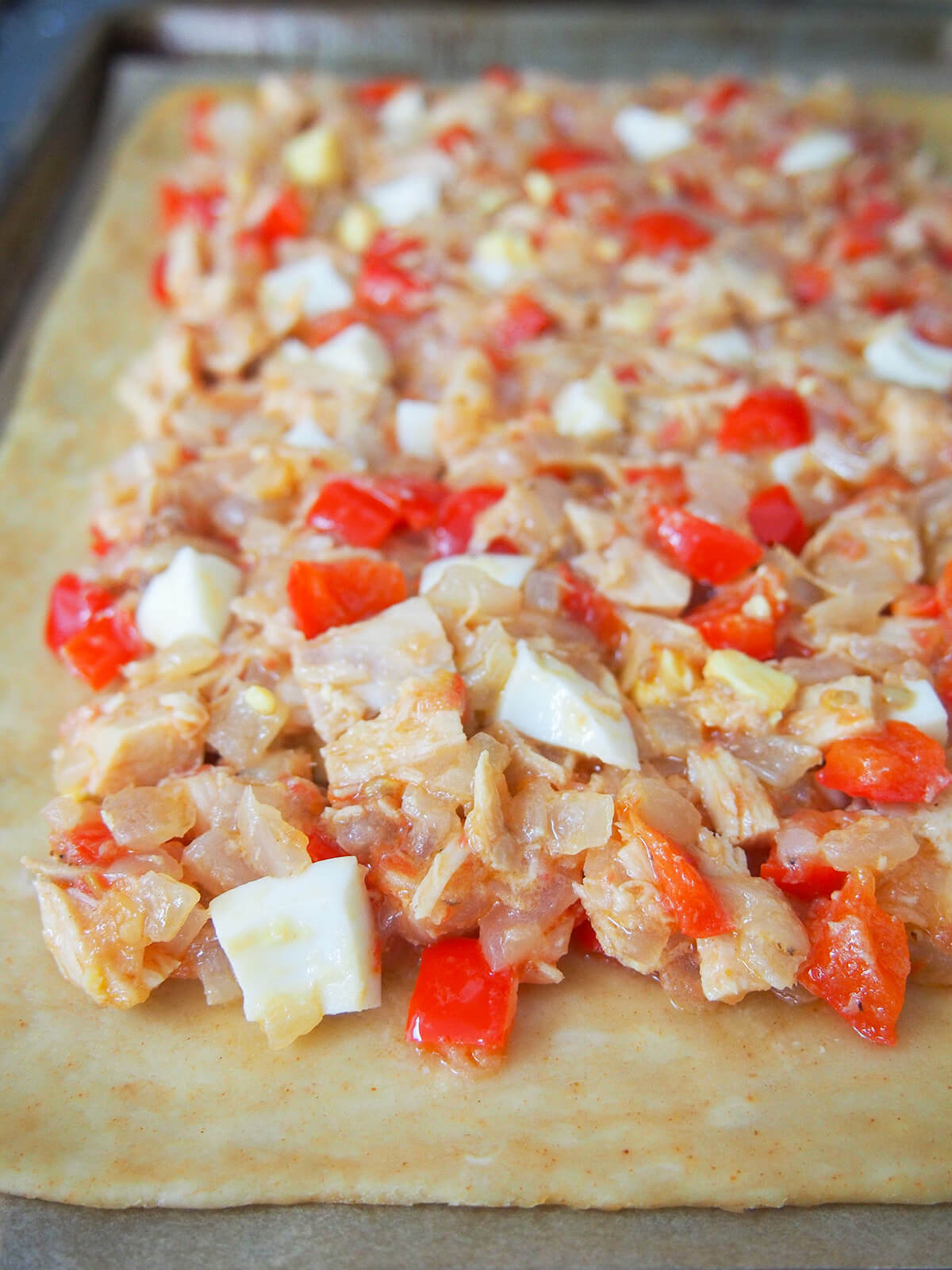
One other thing you often add to the dough is sweet paprika. This helps add both flavor and a lovely light red color that, especially when combined with egg wash on the outside, helps the crust go a lovely golden brown.
Whether you stick with my suggested mix below, or change things up a little, the process is much the same. You simply mix all the ingredients together, knead the dough briefly to bring it together then let it rest. If you like, you can make the filling while the dough rests, or you can prepare the filling ahead, as I mention above.
Assembling the pie
Once you have cooked the vegetables for the filling, mix in the tuna and let everything cool to room temperature. You can either chop the hard boiled egg and mix it in as well, or cut it into slices and add these over the top when you assemble the pie, as you prefer. Once your fillings are ready, and the dough has rested, it’s time to assemble.
You have two options – you can either roll the dough all as one piece and fold the one side over the other, or roll as two pieces, one for the base and the other to top. If you fold over, you have the advantage that at least one side will be well-sealed. If you lay one on top of the other, the edges will likely look more even. It’s really up to you.

Either way, roll out the dough on a lightly floured surface into a relatively thin sheet or sheets. Shape the dough into a rectangle (or rectangles of about the same size). If you need to trim slightly, that’s fine, as you can use the trimmings to decorate the top. Transfer the base half to a lined baking sheet (or the base side with the top part hanging over the edge) before adding your filling. It’s a lot easier to assemble there rather than move after.
Spread the filling mixture evenly over one half, if folding, or the base piece, if using two pieces. Make sure you leave a rim without filling at the edges. Fold or place the top piece of dough over the bottom and crimp the edges to seal in the filling.

Make sure you cut at least one or more slits into the top of the pie. This allow steam to escape while it bakes, which reduces the chances of it bursting open. If you cut off any trimmings from the dough, roll these into thin strips and decorate the top.
Brush the top of the pie with the beaten egg then place the pie in the oven. Bake until the pastry is crisp and golden.
Empanada Gallega is undoubtedly the most popular Spanish savory pie, and with good reason. The filling is a humble yet delicious mix, and the pastry is perfectly crisp and golden. Enjoy it warm or room temperature, it’s a great lunch or snack. Great for picnics, for a potluck or whenever you choose.

Try these other savory pies and tarts:
Empanada Gallega (Galician pie)
This savory pie has a simple yet delicious filling packed with softened vegetables, tuna and egg. A tasty snack or lunch.
Servings: 4 approx
Calories: 593kcal
Ingredients
For pastry
- ½ teaspoon active dry yeast
- ¼ cup warm water (lukewarm rather than hot)
- 1 ¾ cups all purpose flour plain flour
- ½ teaspoon salt
- ½ teaspoon sweet paprika
- ¼ cup virgin olive oil
- 3 tablespoon white wine (can use additional water if you prefer)
For filling
- 1 large onion
- 1 large red pepper
- 2 tomatoes or 1 if large
- 5 oz tuna in oil 1 regular can/tin, save oil, see notes
- ¼ cup olive oil use some from tuna then top up
- 1 hard boiled egg
For brushing
- 1 egg as eggwash – won’t need all
Instructions
To make pastry
-
Add the yeast to the warm water and leave it to bloom for around 10 minutes. Meanwhile, measure out the flour, salt and paprika in a bowl and gently whisk to combine.
-
Add the yeast-water, olive oil and wine to the flour mixture and mix everything well so that the dough comes together. If it is too dry, add a little more water but add gradually so it doesn’t become too wet.
-
Transfer the dough to a lightly floured surface and knead the dough for around 5 minutes so that it is smooth. It might seem a little bumpy and dry compared to a butter crust or bread, but as long as it is not flaking or crumbling, it should be fine. Cover the dough and leave to rest for around 30 minutes. Meanwhile, you can make the filling.
To make the filling
-
Dice the onion and pepper in a relatively small dice. Cut the tomato in half and grate the inside, so that you get tomato pulp and remove the skin and any tough stem.
-
Warm the oil in a wide skillet/frying pan over a medium heat – I start by draining the oil from the canned tuna then top up the measure with other olive oil. Note using the oil from the tuna can mean there is a little moisture in there which can spurt as warm it, but it will be fine once you add the vegetables.
-
Once the oil is warm, add the onion and peppers and cook for a good few minutes, stirring now and then, so that the vegetables soften and the onion goes translucent. This can easily take 10 or more minutes as you want them nicely soft. Don’t let the vegetables brown – there is plenty of oil to help with this but reduce the heat if needed as well.
-
Once the onion is translucent, add the tomato and cook for another couple of minutes until well softened and combined. Add the tuna, break up as needed and mix then remove the mixture from the heat. Allow to cool to room temperature and try to let the pan sit tilted to help drain off the excess oil from the filling.
-
Once the mixture has cooled, transfer the drained filling to a bowl. Dice the hard boiled egg and mix this in gently.
Forming and baking pie
-
Preheat the oven to 375F/190C.
-
Roll out the dough on a lightly floured surface into a rectangle. If you like, you can leave as one large piece (around 15x11in, 38x28cm) and fold over the top, but I find two smaller pieces slightly easier to work with (this is what I show in the video). Once you have partly rolled the dough, divide roughly in half and roll each half out further. Roll one piece for the base to around 8x11in (20x28cm) and the piece for the top to around 7x10in (18x25cm). Slightly smaller with a thicker filling is also fine.
-
Line a baking sheet with parchment and place the slightly larger base piece of pastry on top. If needed, slightly trim the edges to be move even – you can use the trimmed pieces to decorate the top.
-
Top the pastry with the filling mixture, leaving an edge around the outside with no filling on it of around ⅔in (2cm). Try to make the filling relatively even and gently flattened on top. Place the other piece of pastry over the top of the filling and gently stretch the pastry over the filling so that it joins with the pastry below.
-
Working from one corner, crimp the edges of the pastry by gently pulling and folding it in on itself a little at a time (see video). If you are unsure about crimping, you could also just fold over the edge and press to seal with a fork, but crimping is a little prettier.
-
Cut a small hole in the middle of the pastry to form a vent for steam. If you have scraps of trimmed pastry, roll these out thinly, cut into strips and use these to decorate the top of the pie.
-
Brush the pie all over with egg wash (lightly beaten egg) then bake for around 40 minutes until the pastry is golden. Allow to cool slightly and enjoy either warm or at room temperature.
Notes
Traditionally, you use fresh yeast rather than dry but it can be hard to source – if you do have some and prefer to use that, use double the weight of fresh compared to dry.
Some people chose to make the filling first (you can make a day ahead) and use the excess oil in the dough filling. I haven’t here just since it takes a little longer. But if you do, reverse the order and make the filling first so that you then have the oil for the dough.
The most typical tuna for this is “bonito del norte” so a high quality tuna – use this if available or albacore is next closest.
Nutrition
Calories: 593kcal | Carbohydrates: 52g | Protein: 20g | Fat: 34g | Saturated Fat: 5g | Polyunsaturated Fat: 5g | Monounsaturated Fat: 22g | Trans Fat: 0.01g | Cholesterol: 99mg | Sodium: 476mg | Potassium: 513mg | Fiber: 4g | Sugar: 5g | Vitamin A: 2052IU | Vitamin C: 64mg | Calcium: 42mg | Iron: 4mg
See some of my favorite cooking tools and ingredients in the Caroline’s Cooking Amazon store.
I’ve drawn on a few recipes for this, including this empanada gallega site recipe.
Remember to pin for later!

[ad_2]
